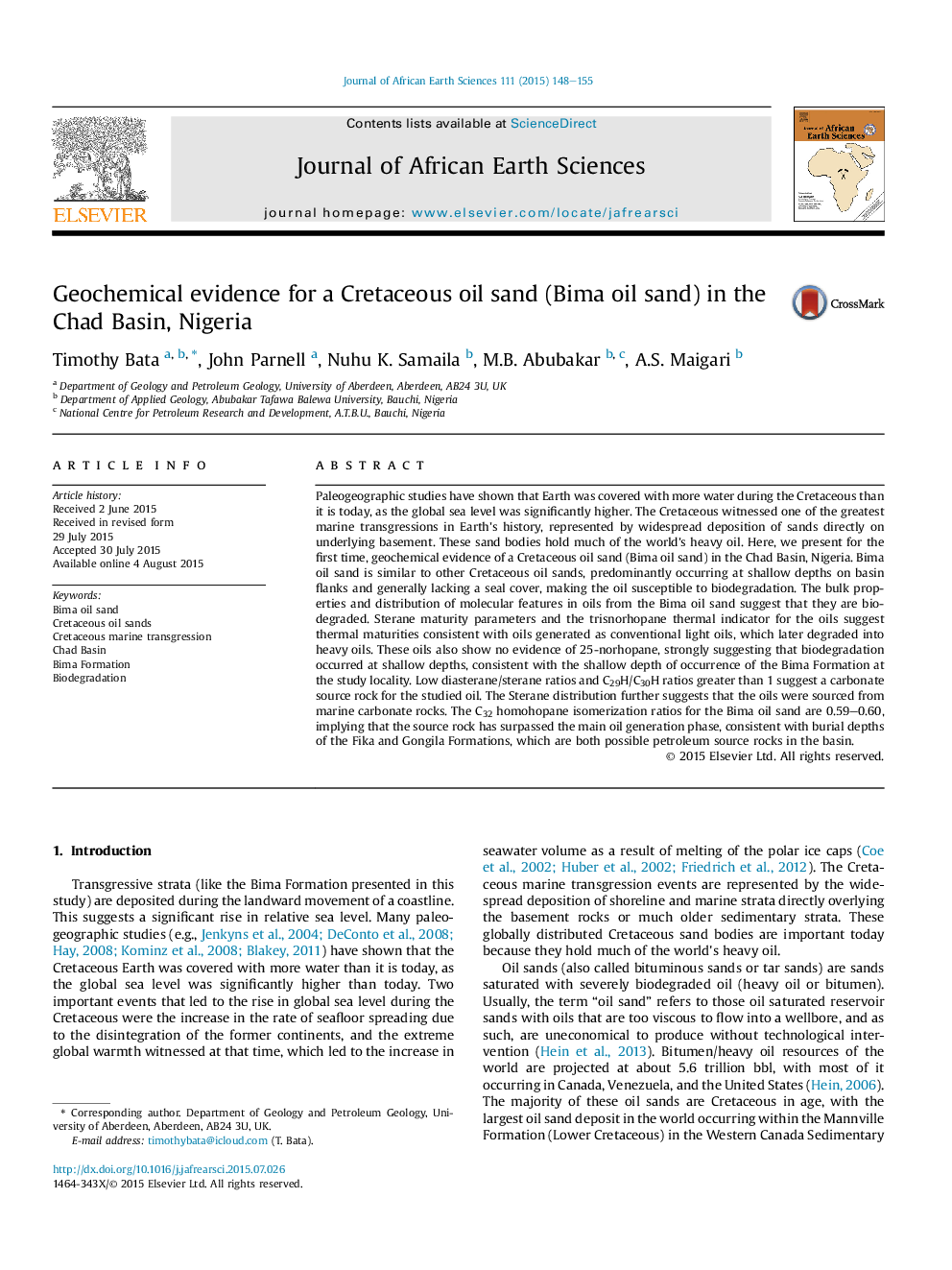| کد مقاله | کد نشریه | سال انتشار | مقاله انگلیسی | نسخه تمام متن |
|---|---|---|---|---|
| 4728491 | 1640196 | 2015 | 8 صفحه PDF | دانلود رایگان |

• We present evidence of a Cretaceous oil sand in the Chad Basin.
• Cretaceous Bima oil sand is similar to other Cretaceous oil sands.
• Results suggest that biodegradation in the Bima oil sand occurred at shallow depths.
Paleogeographic studies have shown that Earth was covered with more water during the Cretaceous than it is today, as the global sea level was significantly higher. The Cretaceous witnessed one of the greatest marine transgressions in Earth's history, represented by widespread deposition of sands directly on underlying basement. These sand bodies hold much of the world's heavy oil. Here, we present for the first time, geochemical evidence of a Cretaceous oil sand (Bima oil sand) in the Chad Basin, Nigeria. Bima oil sand is similar to other Cretaceous oil sands, predominantly occurring at shallow depths on basin flanks and generally lacking a seal cover, making the oil susceptible to biodegradation. The bulk properties and distribution of molecular features in oils from the Bima oil sand suggest that they are biodegraded. Sterane maturity parameters and the trisnorhopane thermal indicator for the oils suggest thermal maturities consistent with oils generated as conventional light oils, which later degraded into heavy oils. These oils also show no evidence of 25-norhopane, strongly suggesting that biodegradation occurred at shallow depths, consistent with the shallow depth of occurrence of the Bima Formation at the study locality. Low diasterane/sterane ratios and C29H/C30H ratios greater than 1 suggest a carbonate source rock for the studied oil. The Sterane distribution further suggests that the oils were sourced from marine carbonate rocks. The C32 homohopane isomerization ratios for the Bima oil sand are 0.59–0.60, implying that the source rock has surpassed the main oil generation phase, consistent with burial depths of the Fika and Gongila Formations, which are both possible petroleum source rocks in the basin.
Journal: Journal of African Earth Sciences - Volume 111, November 2015, Pages 148–155